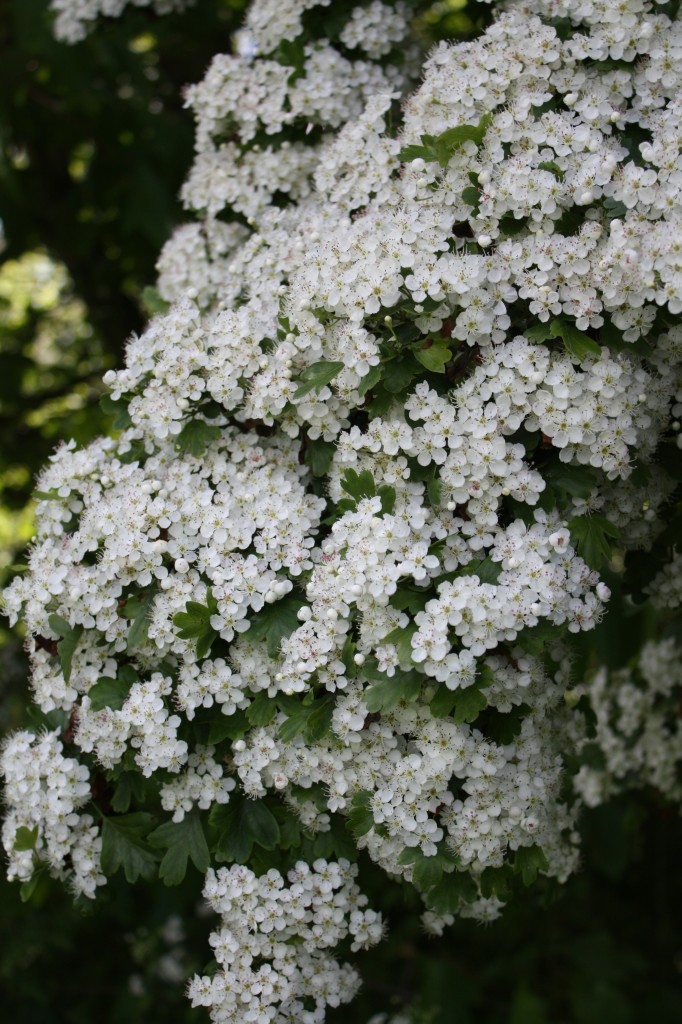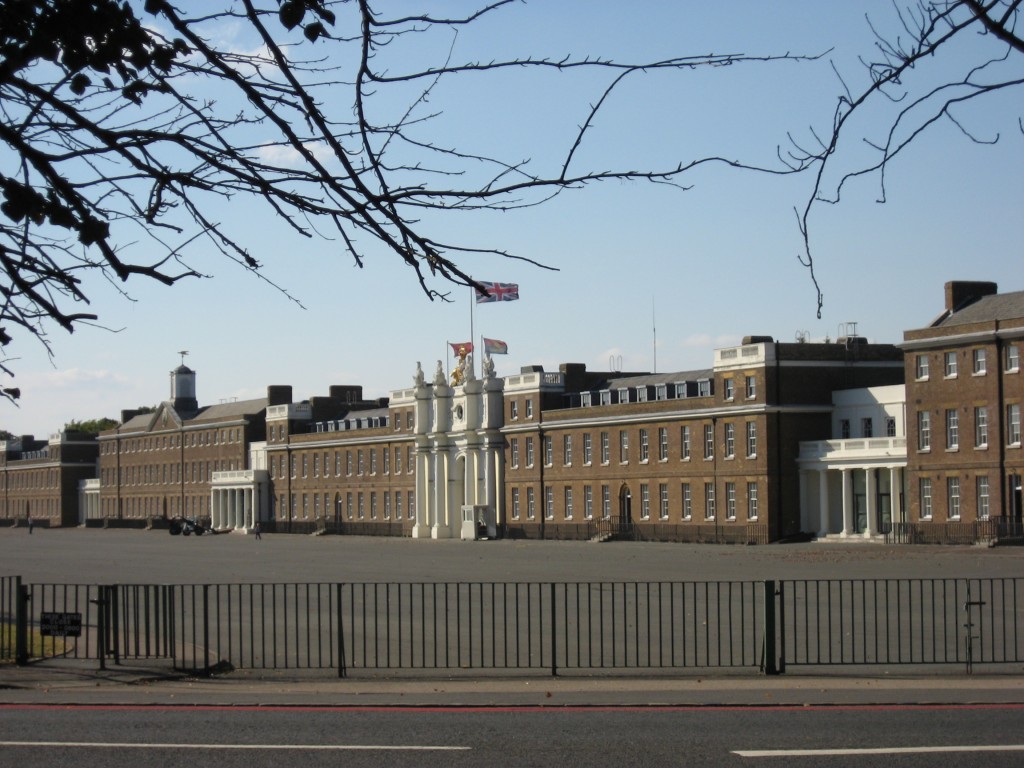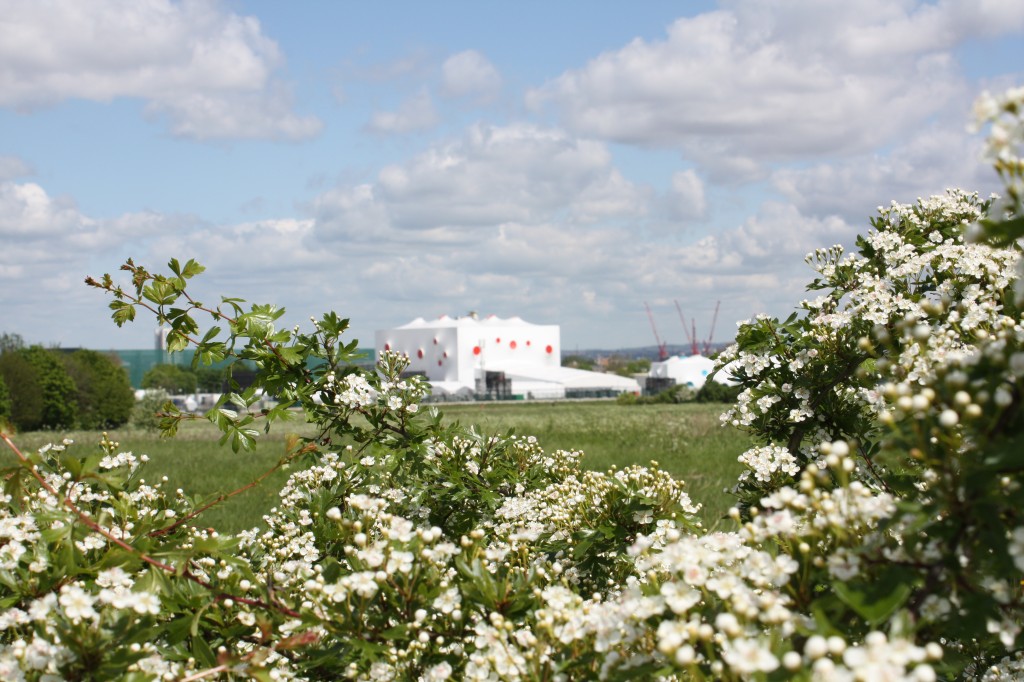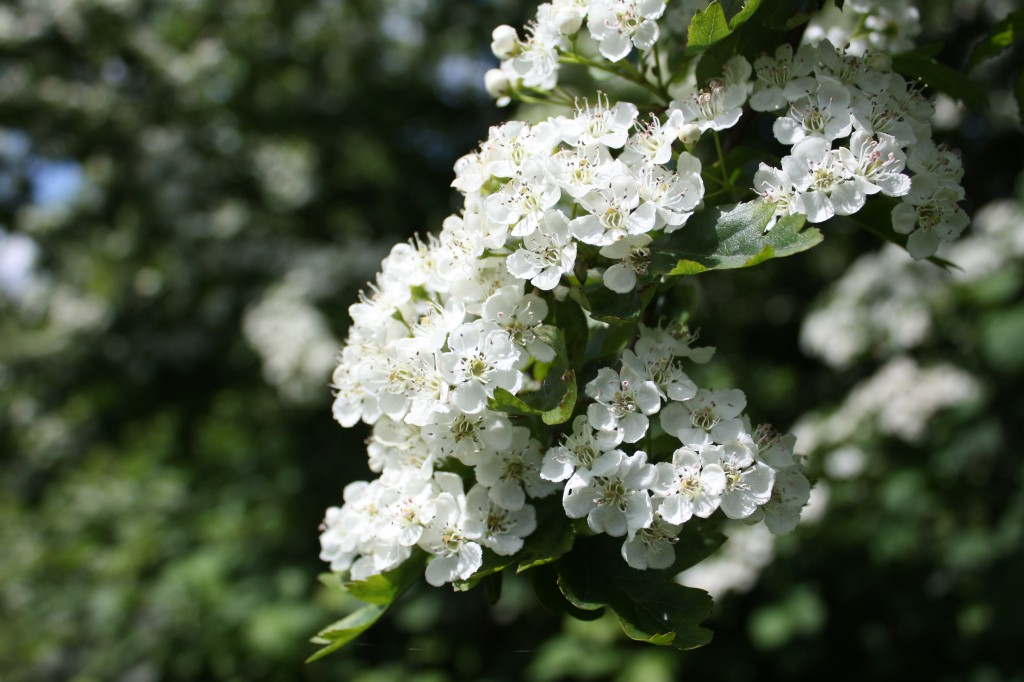
Action Week, as David Hockney named it, is here – the brief period of the year when hawthorn trees are covered with copious creamy-white blossom. Hockney describes the sudden appearance of the blossom as being “as if a thick white cream had been poured over everything” and saw it as a time to seize the opportunity to capture the temporary transformation in art. His hawthorn pictures, whether made using water colour or iPad, were some of the highlights of his recent Royal Academy exhibition.
The display of hawthorn blossom on Woolwich Common is as awesome as the sheets of bluebells that carpet nearby woods, and I think should be similarly cherished and celebrated. Academy Road and its parallel path, where I wandered yesterday, would be a good place to start, but many of the other main paths on the common are also bordered by blossom, which may be a vestige of the use of hawthorn as a hedging plant starting from the time of the Anglo-Saxons for whom it was the Haegthorn, hedge-thorn.
The hawthorn is magical in more than its ephemeral adornment of the Common; it seems to exceed other trees in its supernatural, superstitious and sacred associations. One of its many names is the May Tree; it now blossoms during the month of May, but this would have been closer to the start of May before the Julian to Gregorian calendar change lopped 11 days out of the calendar on 2nd September 1752. The blossom was used for decoration and garlands in May Day celebrations, symbolising new life and fertility.

Woolwich Common has an interesting history, outlined well in the Woolwich Common Conservation Area Character Appraisal, which is illustrated with some superb old maps. One of these, the Hasted Map from 1748, shows Woolwich and Charlton Commons extending unbroken from Shooters Hill to Charlton Place and Hornfair Park. However the military was using the common for testing artillery by 1720, which increased through the 18th century culminating in the construction of the barracks in 1775 and enclosure of the barrack fields behind a ha-ha in the late 1790s. This encroachment on common land was opposed by local residents seeing their rights reduced. Military ownership of the common completed in 1803, as the Conservation Area Character Appraisal says:
In 1803, prompted by the needs of the emerging Napoleonic Wars, the Barracks was doubled in width creating an immense 330m frontage – on a scale seen elsewhere only in St Petersburg. The military consolidated control over the entire Common, by means of four special Acts of Parliament to enable their purchase of almost the entire Common for artillery and training purposes. Woolwich Common as it appears today is the result of the subsequent two centuries of military encroachment and development and various opposition movements and compromise agreements trying to reconcile the public’s desire for recreational access with military needs.
The English Heritage Draft Survey of London on Woolwich mentions that the Board of Ordnance compensated Woolwich parishioners for the loss of their rights to extract gravel from the common, but there was no explicit compensation for loss of herbage and turbary rights, which means it could be argued that we are still allowed to graze our animals on the common and cut turf for fuel. I’m not sure about our estovers (collection of wood or gorse for fuel or building), or the right to build a garish spotted olympic venue.
So now is the time to cast a clout, and for a stroll on the common to admire the May blossom. Here are some more pictures to whet your appetite:


